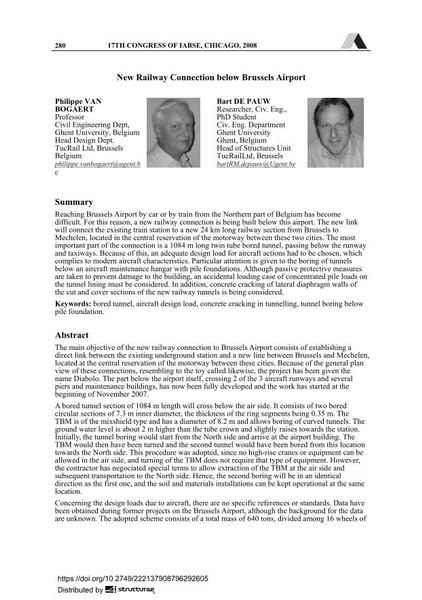New Railway Connection below Brussels Airport

|
|
|||||||||||
Bibliografische Angaben
| Autor(en): |
Philippe Van Bogaert
Bart De Pauw |
||||
|---|---|---|---|---|---|
| Medium: | Tagungsbeitrag | ||||
| Sprache(n): | Englisch | ||||
| Tagung: | 17th IABSE Congress: Creating and Renewing Urban Structures – Tall Buildings, Bridges and Infrastructure, Chicago, USA, 17-19 September 2008 | ||||
| Veröffentlicht in: | IABSE Congress Chicago 2008 | ||||
|
|||||
| Seite(n): | 280-281 | ||||
| Anzahl der Seiten (im PDF): | 7 | ||||
| Jahr: | 2008 | ||||
| DOI: | 10.2749/222137908796292605 | ||||
| Abstrakt: |
Reaching Brussels Airport by car or by train from the Northern part of Belgium has become difficult. For this reason, a new railway connection is being built below this airport. The new link will connect the existing train station to a new 24 km long railway section from Brussels to Mechelen, located in the central reservation of the motorway between these two cities. The most important part of the connection is a 1084 m long twin tube bored tunnel, passing below the runway and taxiways. Because of this, an adequate design load for aircraft actions had to be chosen, which complies to modern aircraft characteristics. Particular attention is given to the boring of tunnels below an aircraft maintenance hangar with pile foundations. Although passive protective measures are taken to prevent damage to the building, an accidental loading case of concentrated pile loads on the tunnel lining must be considered. In addition, concrete cracking of lateral diaphragm walls of the cut and cover sections of the new railway tunnels is being considered. |
||||
